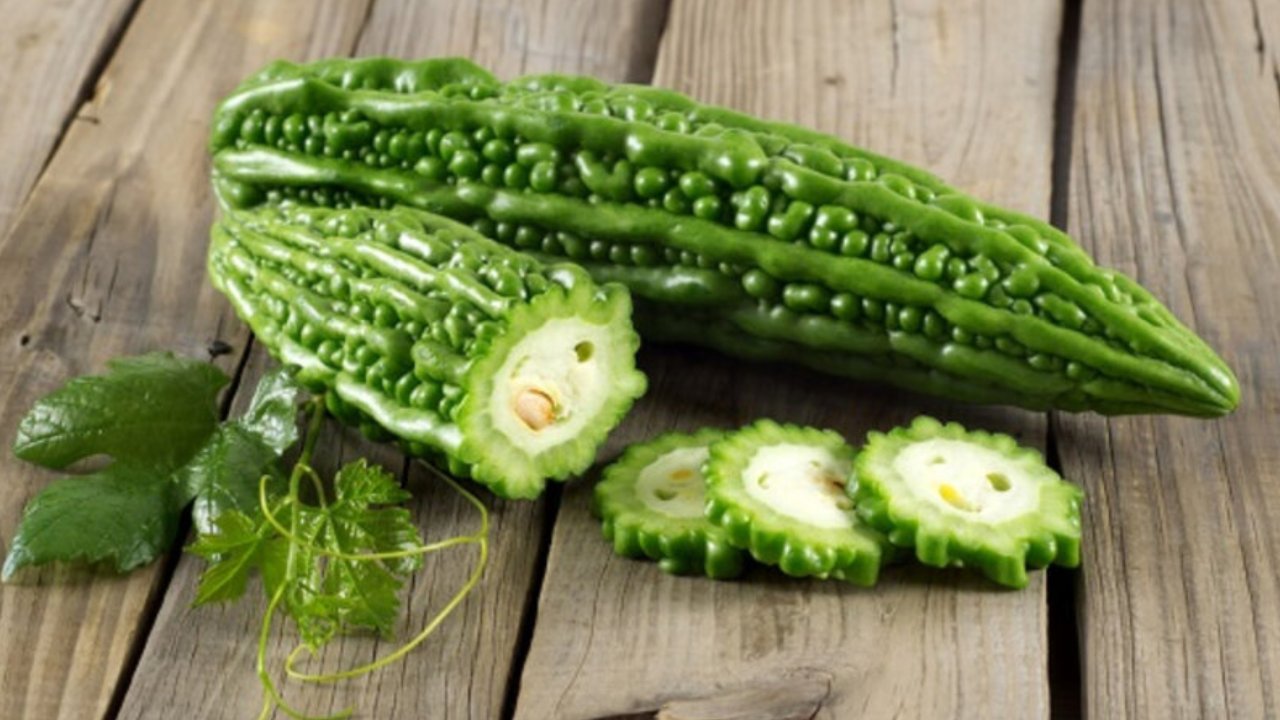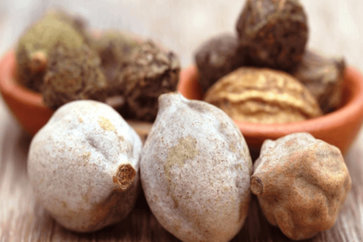Bitter Melon (Karela) Health Benefits & Side Effects
Bitter Melon bitter gourd is commonly called (Karela ) all over India it is a vegetable. This vegetable is green in color and has tapering ends. It is covered with blunt tubercles.

The vegetable bitter gourd is a very bitter taste and hence the name. The two varieties, dark green variety and are available in a rectangular pale green variety. It is grown widely in all Asian countries. Bitter gourd has many medicinal properties.
What Is Bitter Melon?
Plant: Annual plant, herbaceous, lively, with flexible stems, and grows up to five mt.
Leaves: It has simple, lobed leaves, 4 to 12 cm in size, and well-marked veins (three to seven). Each plant (dioecious) has separate male and female flowers.
Fruit: The fruit has warts and an oblong and elongated shape. In section, it is hollow, containing a relatively thin layer of meat around a central cavity with large, flat seeds.
Seeds: The seeds and nucleus are white when the fruit is immature and the more mature it is, the redder and sweeter it will become.
Uses: The seeds may be eaten at this time, but the flesh will be too strong to be eaten. In this state, the red and sweet nucleus is used in Southwest Asia as an ingredient for making salads or in cooking food, or as a juice for medicinal purposes.
Bitter Melon Characteristics & Shapes
Bitter melon flesh is crisp and watery in texture, quite similar to cucumber, or chayote. The skin is smooth and edible. Most of the time the fruit is eaten green, although it is also eaten when it begins to ripen and shows a more yellowish color.
The more yellowish the fruit is, the more bitter it tastes. When fully ripe, its flesh is orange in color and soft inconsistency. It comes in a wide variety of shapes and sizes.
The typical variety in China is 20 to 30 cm long, oblong, with blunt tips and pale green color, and slightly arched. The most widespread variety in India is narrower, with pointed ends, a serrated outer surface, and green or white coloration.
Between these two extremes, there are a great number of varieties. Some varieties are only six to ten cm long and are served (in Southeast Asia and India) and cooked individually.
In Central American countries, this plant is known as “calaica”. In Mexico, specifically in the Gulf of Mexico, it is known as “chote”.
Other Names
Ampalaya, African Cucumber,Balsam-Apple, Balsam Pear, Balsamine, Balsambirne, Bitter Apple,Balsamo, Bitter Gourd, Bitter Cucumber,Bittergurke, Carilla Gourd, Carilla Fruit, Chinli-Chih, Cerasee, Courge Amère, Concombre Africain, Cundeamor, Fructus Mormordicae Grosvenori, Kareli, Karela, Karavella, Korolla, Kathilla, Kerala, K’u-Kua, Kuguazi, Margose, Lai Margose, Melon Amer, Bitter Melon, Momordica charantia, Momordica, Momordique, Momordica murcata, Pepino Montero, Paroka, Pomme de Merveille, P’u-T’ao,Poire Balsamique, Sushavi, Sorosi, Vegetable insulin, Ucche, Wild Cucumber.
What Does Science Say?
There is some evidence that bitter melon can help fight the symptoms of diabetes. A review published in 2013 April by the US National Library of Medicine revealed that many people use various parts of the plant for various health benefits.
It helps treat type 2 diabetes, and another study carried out concluded that this melon contains compounds capable of helping to control blood glucose (sugar) and reduce blood lipid (fat) levels.
Overall, research has shown that consuming bitter melon in the following ways can help lower blood sugar levels in some people:
- Seeds
- Mixed vegetable pulp
- Juice
- Supplements
Bitter Melon Medicinal Properties
The vegetable melon has 92% humidity and does not contain any fat. It contains 4.2% and 1.8% carbohydrates and protein. Maintaining good health provides many other essential minerals. It provides 88mg of calcium, 20mg of phosphorus, and iron 1.8 mg.
Top 8 Uses Of Bitter Melon
1. Cure Diabetic
Diabetic patients who are suffering from malnutrition can benefit from this vegetable. It also helps reduce other symptoms related to diabetes and helps increase the body’s immunity.
2. Improve Eye Sight
Vitamin A and beta carotene present in bitter gourd are beneficial for the health of our eyes and improve vision. They are also effective for treating dark circles. It is also useful in the treatment of eye complications.
3. Cure Hemorrhoids
Bitter gourd juice also helps in the treatment of hemorrhoids. The plant’s roots paste when applied externally for hemorrhoids relief of pain and swelling allows.
4. Blood Purifier
Bitter gourd juice helps the purifying blood. The itching, psoriasis, herpes infection treatment helps, and other fungal infections. It also helps reduce itching stimulus.
5. Improve Blood Disorder
When the juice is taken on an empty stomach in the morning lime juice gives beneficial treatment.
6. Cure Asthma
Bitter gourd plant also helps in the treatment of respiratory diseases. The diagnosis of asthma, bronchitis pharyngitis, and rhinitis is. The root of the plant with equal amounts of honey is used as a paste and is taken once before bed. The treatment for a month can give excellent treatment against respiratory disorders.
7. Prevent liver Damage
Leaves of bitter gourd juice also help to prevent liver damage due to alcohol. Bitter gourd juice of leaves is used in the treatment of cholera. It also accelerated the treatment of diarrhea during the summer to give. The bitter grapefruit that may be useful in cancer treatment has been suggested.
8. It lowers cholesterol
It is also considered a great ally to combat cholesterol since in several studies it has been shown that taking a daily amount of bitter melon helps lower cholesterol levels.



























bitter melon is it available in Norway or Europe in general, what Products is shop…?
Bitter melon is one of popular edible pod vegetable in many Asian countries. It is grown widely as a field crop as well as backyard vegetable and, in fact, is among the most bitter tasting of all culinary vegetables.